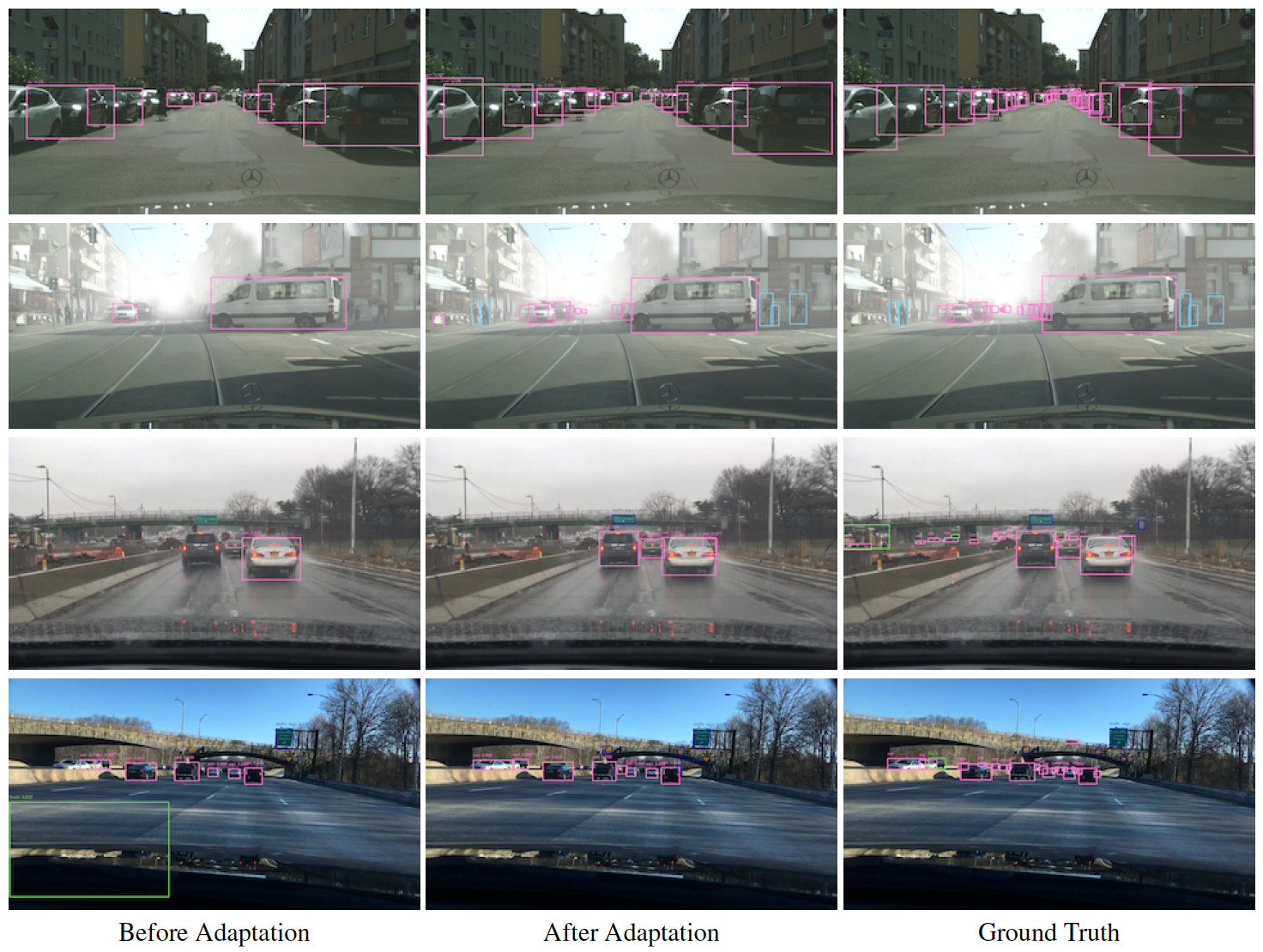Progressive Domain Adaptation for Object Detection
Recent deep learning methods for object detection rely on a large amount of bounding box annotations. Collecting these annotations is laborious and costly, yet supervised models do not generalize well when testing on images from a different distribution. Domain adaptation provides a solution by adapting existing labels to the target testing data. However, a large gap between domains could make adaptation a challenging task, which leads to unstable training processes and sub-optimal results. In this paper, we propose to bridge the domain gap with an intermediate domain and progressively solve easier adaptation subtasks. This intermediate domain is constructed by translating the source images to mimic the ones in the target domain. To tackle the domain-shift problem, we adopt adversarial learning to align distributions at the feature level. In addition, a weighted task loss is applied to deal with unbalanced image quality in the intermediate domain. Experimental results show that our method performs favorably against the state-of-the-art method in terms of the performance on the target domain.
PDF Abstract





 Cityscapes
Cityscapes
 KITTI
KITTI
 Foggy Cityscapes
Foggy Cityscapes
